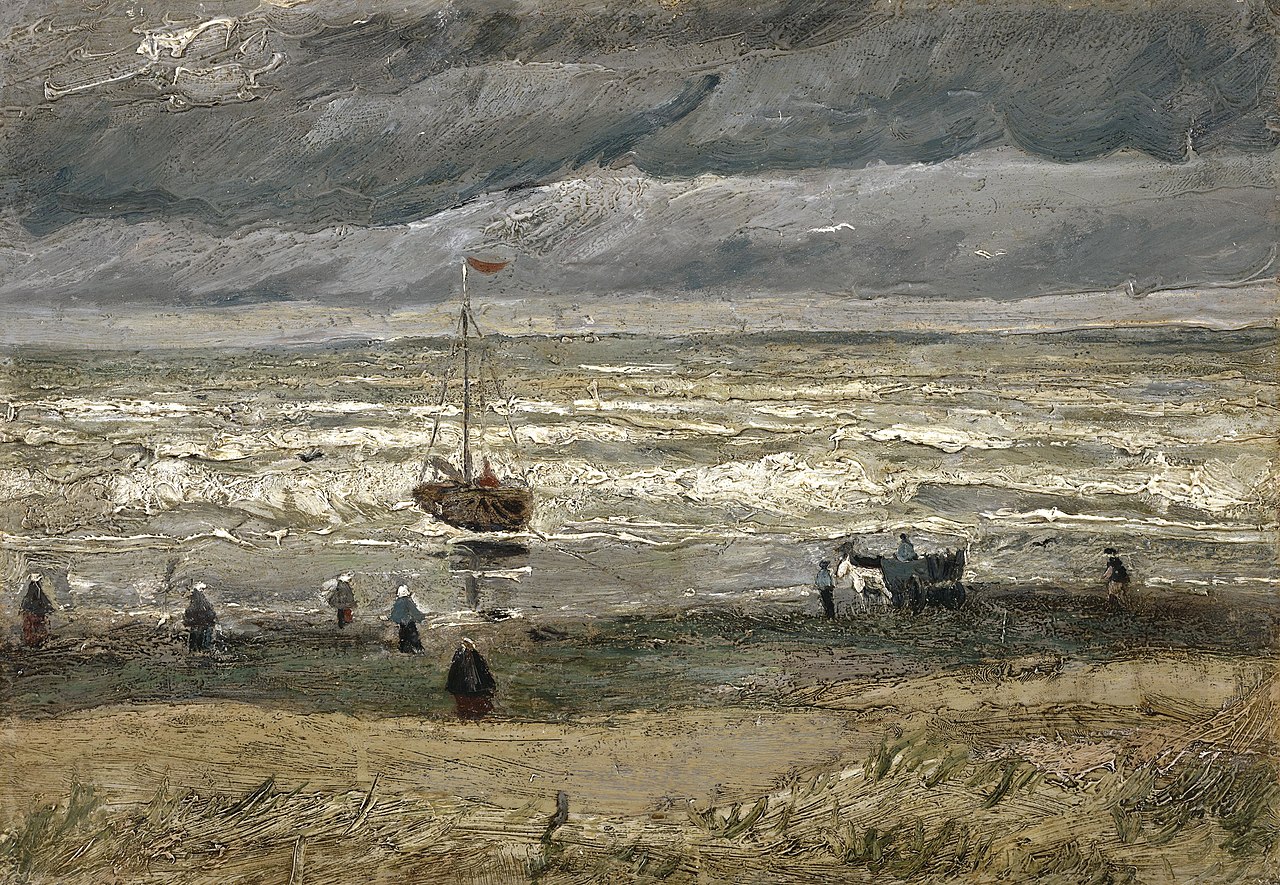I am returning here to a subject I covered over ten years ago, the gardens of the kings of Assyria, because I have been to see the British Museum's exhibition, 'I am Ashurbanipal'. I ended my previous post by referring to a relief dated 645 which shows King Ashurbanipal and his Queen in the royal park in Nineveh, dining under an arbour of grape vines, with the decapitated head of the conquered king of the Elamites hanging from a nearby tree. This scene is on show in the current exhibition, mounted with other smaller ones to show how a complete wall might have looked. You can see this in my photograph above, which I think also gives an indicates of how wonderfully well lit everything is. The garden landscape in which Ashurbanipal is seen drinking and listening to music contains alternating pine and fruit-bearing date palms, perhaps symbols of Assyria and Babylonia respectively. And in the foliage, a bird goes after a locust - in his annals, Ashurbanipal likened the Elamites to a swarm of locusts.
This second photograph shows the royal park created by Ashurbanipal's grandfather Sennacherib, which I also mentioned in my earlier post. In the new exhibition, coloured light is projected onto this relief, picking out the irrigation channels and trees. You can see the effect in a gif at the British Museum blog site. I will quote here what this site has to say about the landscape:
'The gardens at Nineveh were irrigated by an immense canal network built by Ashurbanipal’s grandfather, Sennacherib. He brought water to the city over a great distance using channels and aqueducts to create a year-round oasis of all types of flora. The canals stretched over 50km into the mountains, and Sennacherib boasted about the engineering technology he used. A monumental aqueduct crossing the valley at Jewan, which you can still see the remains of today, was made of over 2 million stones and waterproof cement. The aqueduct was constructed over 500 years before the Romans started building their aqueducts, and was inscribed with the following words: "Sennacherib king of the world king of Assyria. Over a great distance I had a watercourse directed to the environs of Nineveh, joining together the waters… Over steep-sided valleys I spanned an aqueduct of white limestone blocks, I made those waters flow over it."Since I wrote my last blog post on the gardens at Nineveh, it has been argued that they were in fact 'the real Hanging Gardens of Babylon'. Archaeologist Stephanie Dalley first formulated this theory in 1992 and then published a book with new research in 2013. A Channel 4 documentary was made and her new evidence was widely reported in the news. It would obviously be helpful to do some more digging, but the site of Nineveh, around Mosul, has been too dangerous to excavate. Dalley was quoted in 2013 as saying she thought it unlikely that excavations would be possible in her lifetime. A year later, Daesh overran the area and, as Jonathan Jones says in his review of this exhibition, 'they smashed antiquities in the Mosul Museum and set about demolishing Nineveh itself.' It is sad to think how much can change in the course of a few years, but at least these remarkable artifacts remain to give us, amongst much else, an idea of the gardens created by the kings of Assyria.








